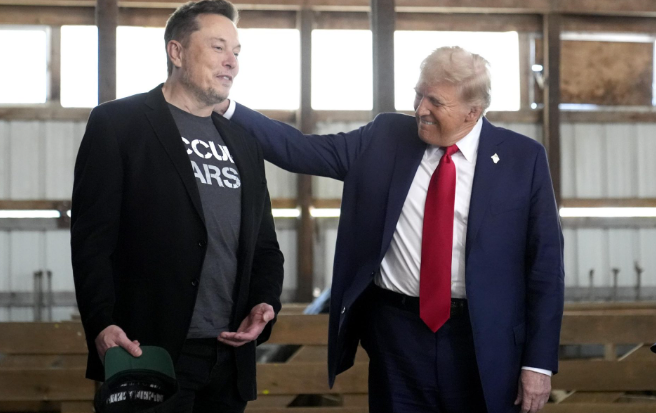[ad_1]
WASHINGTON (Reuters) – President Donald Trump’s effort to reshape influential U.S. courts by stocking them with conservative judges faces at least one significant impediment: some of the courts best placed to thwart his agenda have liberal majorities that are likely to stay in place in the short-term.
Those courts, including an influential Washington appeals court and two appellate courts that ruled against Trump in cases involving his travel ban, all had an influx of fresh liberal blood under President Barack Obama.
“Trump is not going to be able to make any significant dents into the Democrats’ control of those three (appellate) circuits,” said Arthur Hellman, a professor at the University of Pittsburgh School of Law.
After eight years in office, Obama was able to make enough appointments to leave a strong liberal imprint on the federal courts. When he left the White House in January, nine of the 13 federal appeals courts had a majority of Democratic-appointed judges.
The federal appeals courts, divided into 11 geographic regions plus two based in the District of Columbia, often have the final say in major legal disputes. The conservative-leaning U.S. Supreme Court, which now includes Trump appointee Neil Gorsuch, can overrule appeals court decisions, but hears only a small number of cases, which leaves lower court rulings in place most of the time.
The appeals courts can shape the interpretation of such issues as abortion, religious freedom, voting rights and race.
Appellate court judges serve lifetime terms, and so far Trump’s opportunities to appoint new ones have been mostly limited to courts that already lean conservative.
Among the courts conservatives would most like to shift are the San Francisco-based 9th U.S. Circuit Court of Appeals and the Richmond, Virginia-based 4th U.S. Circuit Court of Appeals, both of which ruled against Trump in cases challenging the Republican president’s executive orders temporarily banning travel to the United States by people from six predominantly Muslim countries. The Supreme Court partially revived the ban last month.
The ideological balance of those courts has provided some hope to Trump’s legal opponents, including Democratic state attorneys general, who have already sued the administration over the travel ban and other issues.
“Strategic attorneys general can likely chart a path through Democratic-leaning courts – making it harder on the Trump administration to pursue its agenda through executive action,” said Sarah Binder, a scholar the nonpartisan Brookings Institution think tank.
Second Highest Court
Thanks in part to efforts by the Republican-led Senate in the final two years of Obama’s presidency to block the Democratic president’s judicial appointments, Trump has 21 appeals court slots to fill, according to the federal judiciary’s administrative office. The Senate Judiciary Committee approved two of Trump’s appeals court nominees on Thursday.
In some of the key courts, new vacancies in the near term are more likely to be in slots currently filled by Republican appointees, so Trump’s early appointments will be unlikely to change the court balance. A case in point is the announcement this week by Republican appointee Janice Rogers Brown on the Washington appeals court that she plans to step down.
In Washington, the U.S. Court of Appeals for the District of Columbia Circuit is often called the second-highest court in the land, in part because it hears a large number of cases concerning major government regulations on issues such as the environment and labor.
Democratic appointees hold a 7-4 advantage among the 11 active judges.
Of the Democratic appointees, Judge David Tatel is 75 and Judge Judith Rogers is 77. The next oldest is Merrick Garland at 64. Obama made four appointments to the court, the oldest of whom is 56.
The San Francisco-based 9th U.S. Circuit Court of Appeals is also stacked against Trump: out of 25 full-time judges, Democratic presidents appointed 18 and Republican presidents seven. The oldest Democratic appointee, liberal icon Stephen Reinhardt, is 86 years old. The 10 9th Circuit judges appointed by President Bill Clinton who still work full-time range in age from 63 to 72, and none have given any indication they plan to reduce their caseloads.
The court currently has four vacancies, but three of those seats are based in states – California, Oregon and Hawaii – with two Democratic senators who are likely to resist attempts to place extreme conservatives on the court. Those dynamics make it extremely unlikely that Trump will be able to significantly alter the 9th Circuit’s orientation, Hellman said.
The Virginia-based 4th Circuit has a 10-5 majority of Democratic appointees and no current vacancies. The oldest Democratic appointee is Judge Robert King, who is 77.
Leonard Leo, executive vice president of the conservative Federalist Society, who has advised the White House on judicial nominations, is optimistic about Trump’s long-term prospects.
“It takes time to recalibrate the federal courts,” he said.
In the meantime, Leo said, every slot matters, since conservative judges on liberal-majority courts can offer critical dissents in important cases and serve a kind of signaling function to the Supreme Court.
Reporting by Lawrence Hurley. Additional reporting by Dan Levine in San Francisco and Andrew Chung in New York.; Editing by Sue Horton and Jonathan Oatis
[ad_2]
Source link






Leave a Reply